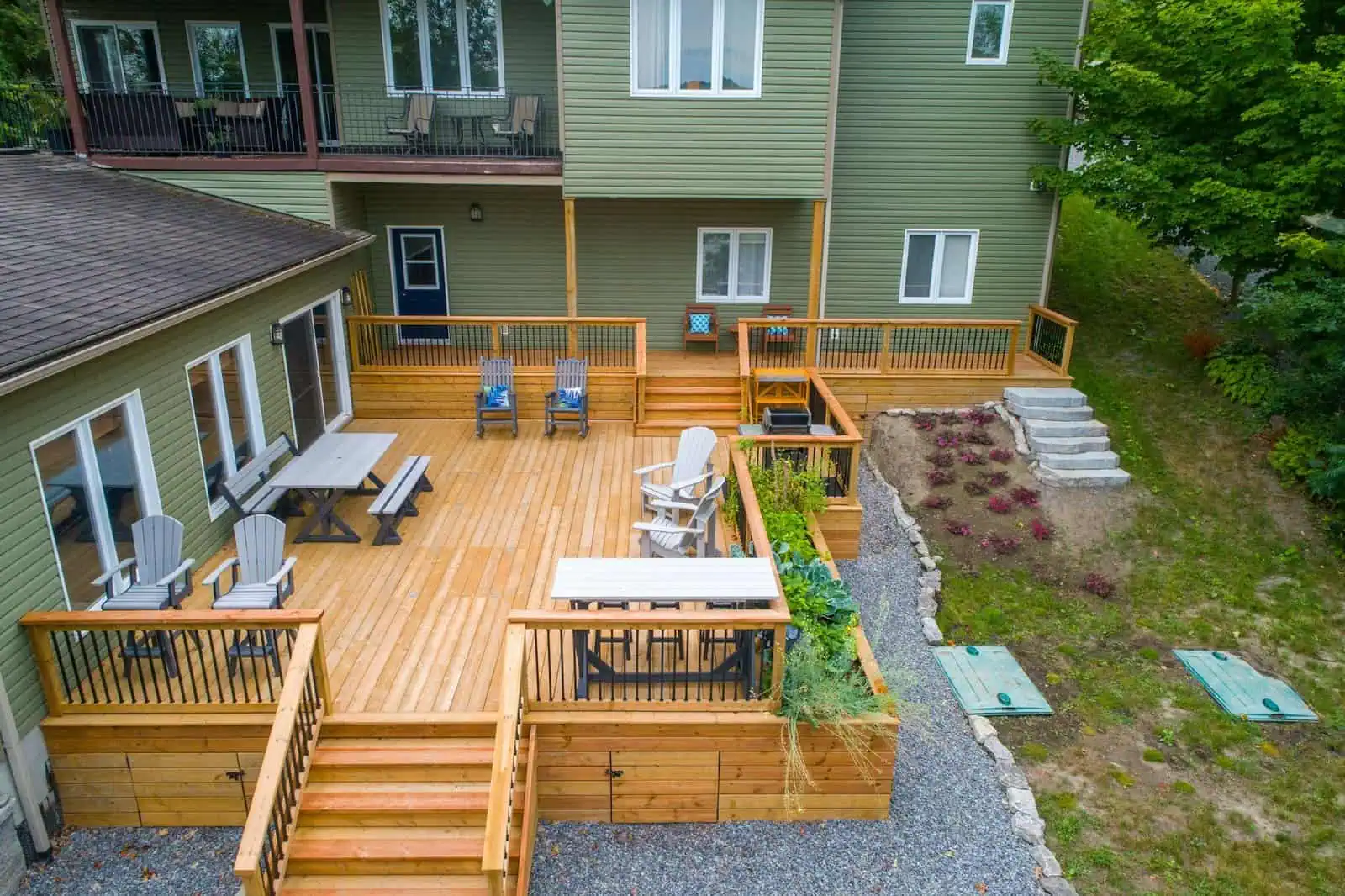When it comes to decking for your home, choosing between composite and traditional wood can be a tough decision. Both options offer unique benefits and challenges, making it essential to weigh your choices carefully. Whether you’re aiming for durability, aesthetics, or low maintenance, understanding the differences between composite and wood decking will help you make an informed decision. Let’s explore the key factors to consider for each type of decking so you can choose the best option for your outdoor space.
Overview of Composite Decking
Composite decking is a modern marvel in outdoor construction, made from a blend of wood fibres and plastic. This combination gives composite decking its distinctive durability and resistance to the elements. Unlike natural wood, composite decking doesn’t splinter, warp, or crack, making it a great choice for busy households or areas with harsh weather conditions. Available in a range of styles and colours at DinoDecking, composite decking can mimic the look of traditional wood while offering enhanced longevity.
Overview of Traditional Wood Decking
Traditional wood decking brings a timeless appeal with its natural beauty and charm. Commonly used woods include cedar, redwood, and pressure-treated lumber, each with its own set of characteristics. Cedar and redwood are known for their rich colours and natural resistance to insects, while pressure-treated wood is highly durable and affordable. Wood decking offers a classic look that many homeowners love, but it requires regular upkeep to maintain its appearance and integrity. Over time, wood can develop a unique patina, adding to its character and appeal.
Durability and Longevity
When it comes to durability, composite decking typically outperforms traditional wood. Composite materials are engineered to resist weather, moisture, and pests, which means they don’t rot, splinter, or require frequent repairs. This makes composite decking a long-term investment that often comes with a 20-25 year warranty, depending on the brand. In contrast, wood decking is more susceptible to the effects of weather, insects, and decay. Without regular maintenance, wood can warp, crack, or rot, potentially shortening its lifespan. Generally, wood decks need replacement or significant repairs every 10-15 years, depending on care and environmental conditions.
Environmental Impact
If you’re concerned about environmental impact, composite decking has some clear advantages. Many composite decks are made from recycled materials, such as plastic bottles and reclaimed wood fibres, making them an eco-friendly choice. Additionally, choosing composite decking can help reduce deforestation and preserve natural wood resources. Wood decking, while natural, raises concerns about deforestation and sustainability. However, using wood from responsibly managed forests or opting for certified sustainable sources can mitigate some of these environmental impacts. When choosing wood decking, look for products with certifications like FSC (Forest Stewardship Council).
Cost Considerations
Cost is a significant factor when deciding between composite and wood decking. Composite decking generally comes with a higher upfront cost compared to traditional wood. However, this initial investment can be offset by the lower maintenance costs and longer lifespan. Wood decking, while often cheaper initially, requires ongoing maintenance and eventual replacement, which can increase long-term costs. When budgeting for your decking project, consider both the initial costs and the long-term expenses to determine the best value for your money.
Does Composite Decking Get Too Hot Underfoot?
There are some materials that get really hot in the summer. We’re talking about tiles and paving slabs. Yes, they can be stylish and even cost-effective. But most people regret them when it comes to the summer. This is the time you want to be outside enjoying yourself. But, if you can’t walk on this surface, it can be very annoying, as well as dangerous for pets and children.
So, what about composite decking? Will this also get too hot underfoot? You’ll be glad to know that the answer to this question is no. This is a material that offers various advantages, and one of them is staying at a comfortable temperature. Let’s take a closer look.
Slightly Warm
Composite decking that’s exposed to the sun will warm up. But, this is a nice temperature, and it won’t get boiling. Therefore, it’s safe to walk on without shoes. Children will be able to play on the decking during the summer, and pets can lie out in the sunshine. You won’t have to worry about the decking getting uncomfortable and burning hot. This is opposed to other materials you might be considering. For example, tiles get very hot in the sunshine and paving can soon become uncomfortable to walk on. Wooden decking can also be warm underfoot, which might not suit families.
Something you do want if you’re getting composite decking is to invest in a type that’s UV-resistant. If you have an area of your garden that’s constantly exposed to the sun, this can mean that materials fade. But, if it’s UV-resistant, this means that it’s going to be protected during good weather, and the colour and style shouldn’t fade.
Conclusion
Choosing between composite and traditional wood decking involves considering factors such as durability, maintenance, cost, environmental impact, and aesthetic preferences. Composite decking offers low maintenance, high durability, and eco-friendly benefits, making it a great long-term investment. Wood decking provides natural beauty and charm but requires more upkeep and has a shorter lifespan. By evaluating these factors based on your specific needs and preferences, you’ll be able to make an informed decision that best suits your home and lifestyle.

